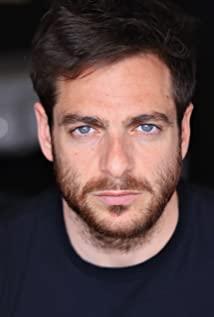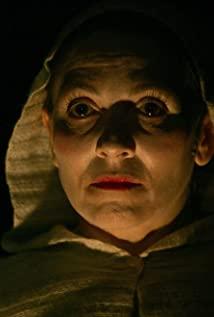The only thing I'm afraid of is that we'll come home one day and get together here every year for a beer and a memory of the good times we've had here. We have to promise ourselves not to be like that. We all know that people always want something, but don't really want to get it. Don't be afraid to fight for what you desire. Thank you!
——Zizek's speech in the "Occupy Wall Street" movement
While watching this movie, I didn't pay too much attention to Sean and Nathan's love, but more about their organization, the activities of this organization, the relationships of people inside this organization, and the movement and the film Intertextuality of the French February Revolution of 1848 mentioned in . What shocked me the most in the whole movie was not the blood-stained Seine, but the scene where the protagonist Sean died (due to AIDS) and could not be buried and the corpse was at home. Sean's original clear and agile eyes were sealed with adhesive tape. The members of the Act Up organization came and went around him, crying and laughing, talking about topics that were thousands of miles away from his death, and he was always active again. Don't raise your hand to express an opinion. In the end, Sean's ashes were sprinkled in food, on the heads of people he hated, on the ground to be trampled on, and he was burned, thrown, consumed, and there was no more Sean. However, Sean is not the only deceased in this film, nor is he the only one who knows that he will be devastated after death. In the middle of the film, the monologue of the dying, young AIDS patient Jeremie establishes a story that spans more than a hundred years. The historical bridge enables the two political movements to echo each other and form intertextuality. In the parade on the street, the dead walk with the living, just like every movement in human society. If the undead are not summoned, if the undead are not summoned in a proper way, failure will come to the door with a familiar face.
The French February Revolution broke out in 1848. The angry people successfully overthrew the July Dynasty. Louis Bonaparte established the short-lived Second French Republic. In 1852, Bonaparte immediately announced the restoration. Hegel said that the repetition of the same thing is a symptom, and this symptom means the unfolding of a deeper history. Žižek also said in "The Ideology Guide for Perverts" that each revolution is not only oriented towards the future, it also hopes to redeem the failed revolutions in the past. Going back to "120 BPM", as an active reenactment of the February Revolution and the summoning of the dead, the movie's allegory is not intended to add a sense of heaviness. The multiple voices contained in the movie itself have long been given. Cinematic depth and breadth. I think the film's invocation and call to history reflects the film's thoughtful attitude towards history and movement, an attitude that is no longer taken seriously. In this fatal neglect, people's passion and action for rights gradually Dissolved in a wave of so-called "cynicism". We can’t help but ask: Why are movements, violent or nonviolent, unable to shake the established order today? Has humanity really come to the end of history? Are the victims of this order just waiting to die?
The film is centered on several debates, interspersed with some clips of dancing and growing up late at night. If you exclude the emotional scenes of Sean and Nathan, this film can be said to be a collection of a series of activity research, full of descriptions of activities, pairings with each other. Reflections on the activity, suggestions for the activity, and the written draft can be handed over to the sponsor for deliberation. I believe that activity, or movement, is the main thread of this film. The movement I am talking about here is not the demonstrations and meetings shown in the film, but a broader movement, which includes movement at the spiritual level. At the level of practical action, a group of dying people discuss the details, feasibility, and public impact of a series of actions with extreme restraint, and their cautiousness cannot bring them public tolerance, because the taboo of disease has been Overshadowing the public's empathy, first of all, the existence of this group of people is like a pathogen. Every time a "non-violent" protest against the existing order is launched, it is regarded as an aggressive and objective violence (here the Objective violence and subjective violence exist relatively, as defined by Zizek's "Reflections on Six Aspects of Violence"). Second, the entire actual movement's imitation of the February Revolution constitutes the film's tragic element, since the February Revolution and the ACT The background and demands of the UP movement are completely different. Protests and other rich performance art are at best strategies generated by members of the organization based on historical memory. Whether it is throwing blood bags or blood-staining the Seine, these are destined to be regarded as objective violence by other members of society. Behavior, it is difficult to bring about real change in this group of patients, who are still isolated and helpless as a group excluded by society. Where the film really shines is in its interpretation of the movement on the spiritual level, Zizek refers to what Benjamin distinguishes as divine violence (which aims to destroy old laws and boundaries, clear the detritus of the old world, A complete break with the past, he sees the French Revolution as an example of divine violence), appears in the parts of the film without "blood", in the fissures of dance and late-night growth, which are also part of the movement, even the Movement can redeem the value of history. Two details in the film show the movement's spiritual break with history including the French Revolution. One is Sean and Nathan kissing in front of homophobic people, and the other is the members' use of disco to relieve stress and fear, forming a movement. The internal rupture changes the meaning of movement. The former detail cuts through the barriers of the existing order with eternal love; the latter detail distorts the meaning of the movement with the amusement and care of modern people. Even if there is a fierce confrontation with the public power, they do not have to be fugitives. They hide their faces and hide behind barricades with guns. In addition to the actual actions that are identified as "objective violence", they truly care for each other, love the present, and hope to maintain each other's lives even if they are powerless. Those parts that appear to be the "cracks" of the movement are precisely part of the movement.
In my opinion, looking at the film from Sean's point of view, the planned action part has no real redemptive value, but the contingent, instinctual spiritual aspect that makes the movement meaningful , it continued and redeemed the February Revolution at a deeper level in history - the actual action part cannot escape the old ideology, the old order system and framework, but the non-ideological love and care can take the form of divine violence Beyond history and experience, it has become an important driving force for the movement to escape the fate of failure. It is by focusing on this question that this film of social movement is truly complete. But today's people talk about acting in the name of love, always have a mocking attitude, "deliberate" every step of the way, replace emotion with reason, replace impulse with "prudence", and finally fall into doomed cynicism, because Fearing and laughing at love, so I dare not love or desire, I think, when everyone is subdued by this ideology, human history will truly come to an end.
let's move! In the name of love!
View more about BPM (Beats Per Minute) reviews











